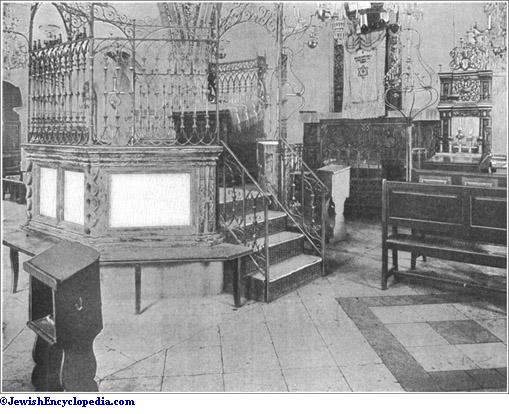ALMOHADES:

A Moorish dynasty in north-western Africa and in Spain during the twelfth and thirteenth centuries. With the rise of the Almohades (Almuwaḥḥidin) dynasty, a radical change was suddenly apparent in the territories which it succeeded in bringing under its scepter. Religious laxity had penetrated the western parts of the Moslem world to such an extent that the most important tenets of the faith were utterly neglected. Being consummate theologians and imbued with the spirit of uncompromising orthodoxy as taught by Al-Ghazzali, the Almohade rulers initiated a reaction of the most thoroughgoing kind. The new state of things was felt by the Jews as soon as 'Abd al-Mu'min, the second Almohade prince, took Morocco in 1149, and not long afterward those of Mohammedan Spain were also made to feel the difference. It was only one of the consequences of the renewed rigidity of the law that non-Moslems should not be tolerated in the Almohade states. The Jews and Christians had to choose between conversion to Islam and emigration. Synagogues and churches were either destroyed or changed into mosques. Many people left their homes, others agreed to pronounce the formula of the Moslemcreed, while secretly continuing the observance of their own religion. In accordance with the established practise the merely formal adoption of Islam was deemed sufficient by the early Almohade rulers; and, as Moslem doctrine emphasized the unity of God in its most stringent fashion, many Jews thought it only a small transgression to so acknowledge in addition Mohammed as a prophet. In order to prevent the harm which it was felt must ultimately result from such a notion, Maimun b. Joseph, the father of Maimonides, who at that time had settled at Fez with his family, wrote his "Epistle of Consolation" in which he advised his brethren not to lose heart and faith. In the same cause his son Moses wrote his "Letter concerning Conversion," to encourage those who felt the gravity of even this outward desertion from the faith of their fathers.
But such proceedings did not remain unnoticed by the later Almohade princes, who were not satisfied with the mere utterance of a religious formula. Abu Yusuf Ya'Ḳub Almansur, the fourth Almohade prince, suspecting the sincerity of the converted Jews, forced them to don a distinguishing garb, consisting of a black tunic with long sleeves, and a yellow scarf as head-covering. His successor Abu Abdallah changed the color of the gaberdine also to yellow. Before the middle of the thirteenth century the power of the Almohades was broken in Spain; but in northern Africa the lot of the Jews continues a hard one, even down to the present day, as a result of the Almohade reaction.
- Grätz, Gesch. d. Juden, vii. 23, 98;
- for the Almohades in general, see Goldziher, Materialien zur Kenntniss der Almohadenbewegung in Nord-Africa, in Z. D. M. G. xli. 30-140;
- Die Bekenntnissformeln der Almohaden, ibid. 168-171, and the authorities there cited.
- On Maimun's letter, see Introduction to Simmonds' edition in Jew. Quart. Rev. ii. 62, 335 et seq.

